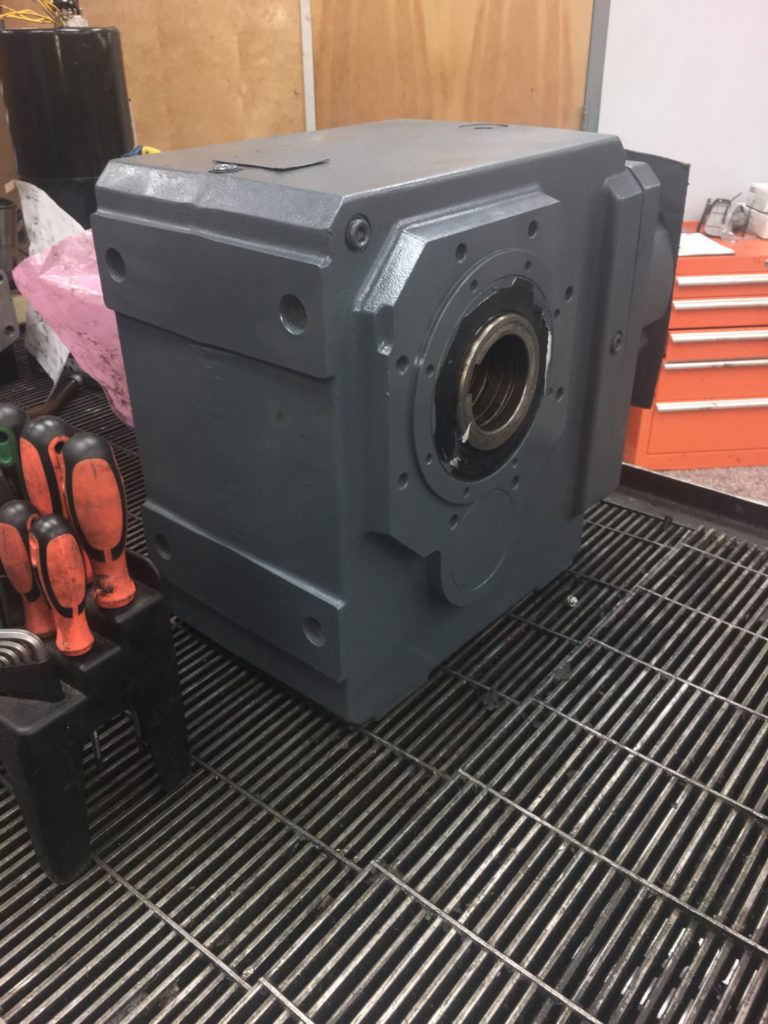Gearboxes are a common piece of equipment we repair in the service center; they are utilized in nearly every industry. Their primary function is to convert the rotation of a motor, decreasing the speed of the output shaft while increasing torque. Gearboxes are sold in countless sizes and gear ratios that application engineers can use to make a simple motor much more flexible and configurable to a designs needs. But like all mechanical equipment, gearboxes are prone to failure.
The most common failures we see in the service center:
Bearing Failure
Similar to electrical induction motors, premature bearing failure accounts for over 50 percent of all gearbox failure. Excessive axial or radial loads acting on the bearings, improper or over lubrication are common bearing related failure modes.
Load issues can be caused by a number of mechanical failures that are dependent on the specific application. If the gearbox experiences an excessive load on the output shaft, force will be transmitted to the bearing and damage will occur within the bearing. This is identified by analyzing the fatigue or “spalling” on the ball path within the bearings races. Improper lubrication can also cause failures. If the gearbox is over lubricated, there can be excessive heat caused by internal fluid friction. If it is under lubricated metal on metal friction will eventually result in a catastrophic mechanical failure.
Gear Failure
The gears within the gearbox are what creates the transmission of force and determines the specific ratio of the output shaft. Gear failures within the housing can be caused by the following:
- Contaminated oil within the gearbox causing micro pitting or fretting
- Misalignment of the gears
- Excessive heat
Gears typically fail as a result of some sort of contaminant entering the gearbox fluid. This can be caused by a mechanical failure within the unit – such as metal shavings from a bearing failure. These metal particles work themselves between the gears causing small fractures in the metal and eventually causing them to either slip, overheat or failure altogether. Another failure related to the gears are misalignment. This is normally related to either the gearbox being serviced incorrectly or a manufacturing defect.
Sealing Component Failure
- Dirt, sand, metal or other abrasive material abrading the seal material
- Improperly sized seals installed during maintenance
- Excessive heat
The number one reason we see seals on a gearbox fail is due to contamination. As the gearbox rotates dirt and debris tends to collect at the seam of the seal and shaft. This dirt tends to tear into the seal overtime and create a leak. As the gearbox leaks, it loses lubrication leading to other failures. In addition, if the gearbox gets overly hot, this will warp the seals themselves.
Remember, if you have any gearbox breakdowns or have one in need of service, we are here to help. Be sure to visit us online at www.gesrepair.com or call us at 1-877-249-1701 to learn more about our services. We’re proud to offer Surplus, Complete Repair and Maintenance on all types of Industrial Electronics, Servo Motors, AC and DC Motors, Hydraulics and Pneumatics. Please subscribe to our YouTube page and Like Us on Facebook! Thank you!
